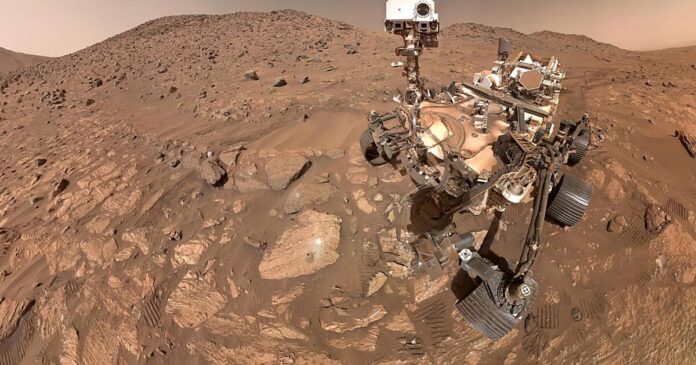Over four years since it landed on Mars, NASA’s Perseverance Rover might have made serious headway in its mission to find signs of ancient microbial life on the planet.
Last July, the autonomous exploration vehicle stumbled upon an arrowhead-shaped rock named Cheyava Falls with colorful spots on it, in what might be a river valley carved by water on the Red Planet.
NASA’s scientists think those spots may have been left behind by microbial life billions of years ago. It sounds awfully hard to believe and there might be other explanations for this, so the agency is making the data from its findings available to the broader space community to examine further via a peer-reviewed paper in Nature.
The animation below shows what the Neretva Vallis valley might have looked like way back when, with a flowing river flanked by sandy, rocky hills.
History of Mars: Water Flows in Ancient Neretva Vallis (Animation)
Let’s take a closer look at those spots. They were found using two instruments on the rover: PIXL (Planetary Instrument for X-ray Lithochemistry) and SHERLOC (Scanning Habitable Environments with Raman & Luminescence for Organics & Chemicals). The spots appeared to be arranged in a distinct pattern of points of contact where chemical and physical reactions occur, with the signature of two iron-rich minerals found on Earth around organic matter.
NASA/JPL Caltech/MSSS
The appearance of both these minerals is a potential sign of ancient microbial life, and the aforementioned reactions would have produced energy to spur microbial growth.
To be clear, NASA says its findings don’t point directly to actual proof of ancient life, but to a potential biosignature: a substance or structure that appears to have a biological origin, indicating that life may have existed there at some point in the past.
NASA notes those minerals might well have been generated on Mars without the presence of life – but then you’d need sustained high temperatures, acidic conditions, and organic compounds to bind them to the rock. There isn’t any evidence of such conditions on rock samples from the area, and as such, this has led scientists to believe the evidence might point to microbes from way back. This could reveal the past habitability of the planet.
The rover landed at Mars’ Jezero Crater in February 2021, with the mission of spotting signs of life. The landing site is believed to have been flooded with water some 3.5 billion years ago. The inputs of experts outside of NASA could finally help us begin to answer one of the most puzzling questions on Earth: are we alone?
Source: NASA


